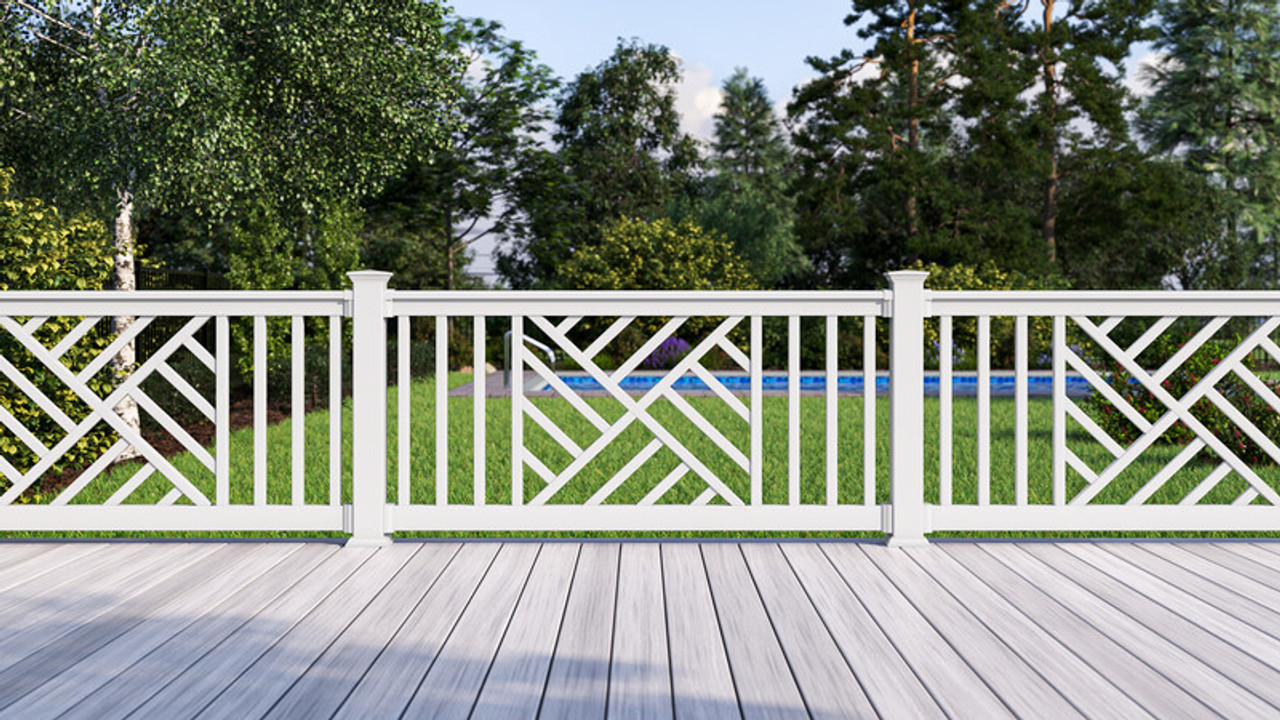When designing your deck, it’s crucial to give careful consideration to the railings, just as you do with the decking materials, styles, and patterns. Since railings are highly visible from both inside your home and your backyard space, they play a significant role in the overall aesthetic of your deck.
Safety is another essential function of railings, especially if your deck is elevated. So, not only should they look great, but they must also provide a secure barrier for peace of mind.
Various railing designs can dramatically transform the appearance of your decking. From maintenance-free options to baluster spacing, glass railings, and Chippendale designs, the possibilities are endless.
Moreover, the materials you choose for your railings are equally important. You can opt for composite, aluminum, iron, stainless steel, wood, vinyl, or many other different deck railing designs.
Now, let’s explore the main types of deck railings and railing systems along with some additional information:
Railing Types and Cost Estimates:
1. Chippendale Railing:
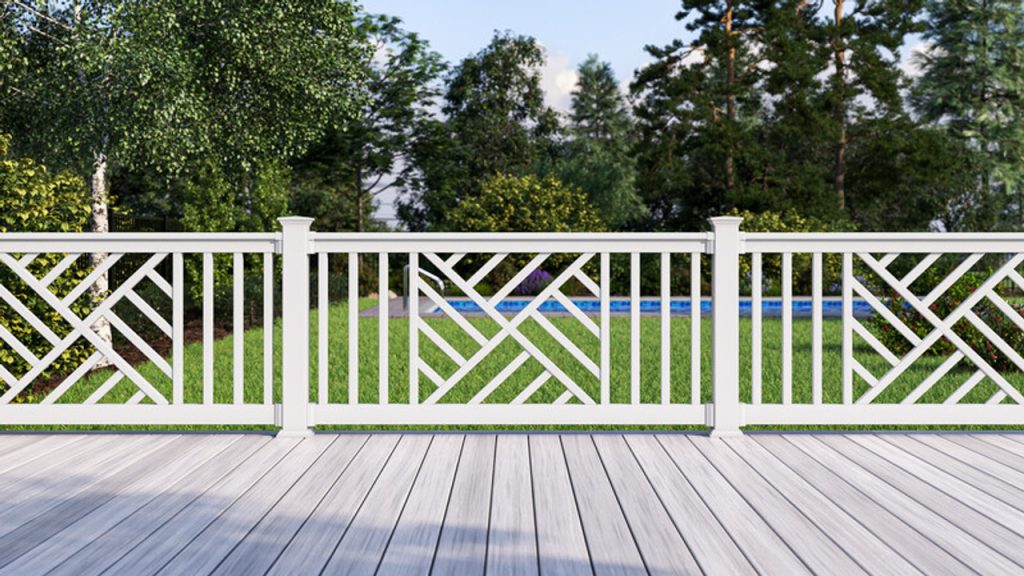
The Chippendale railing features an elegant X-shaped pattern with intricate lines converging in the middle, creating a stunning look on horizontal rails.
Pros:
– Exudes beauty and intricacy.
– Suits well on horizontal rails.
Cons:
– Challenging to paint or stain due to its complexity.
Cost:
Each Chippendale railing panel may cost around $100 to $150.
2. Rustic Railing:

The rustic railing exudes an informal and natural style, with treated wood materials featuring rough edges for a wilderness-inspired look.
Pros:
– Captivating and intriguing with random designs.
– Allows for various finishing options.
Cons:
– Requires careful inspection to prevent disassembly.
– Staining or painting might be difficult due to irregularities.
Cost:
Rustic railing panels are relatively affordable, starting from around $50 to $200 for more detailed options.
3. Craftsman Railing:
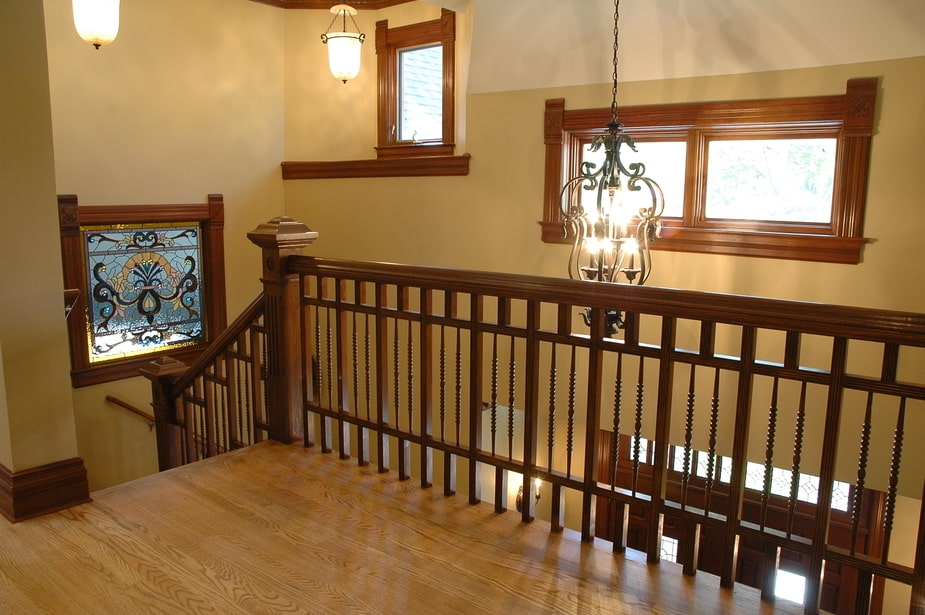
Craftsman railings showcase slim, vertically-organized lines, offering a picket fence-like appearance that provides good coverage without being overly restrictive.
Pros:
– Creates a picket fence-like look.
– Offers a dense and visually appealing design.
Cons:
– Inadequate design may result in an unwelcome jail-like feel.
– Cleaning between vertical posts can be challenging.
Cost:
Craftsman railing panels typically range from $100 to $200.
4. Sawn Baluster Railing:

The sawn baluster railing boasts a repeating, attractive design, with vertical panels connected by cutout shapes in the middle of each panel.
Pros:
– Allows for various pattern options.
– Complements lighter colors beautifully.
Cons:
– Difficult to notice intricate designs with dark colors.
– Requires careful maintenance to avoid wear and tear.
Cost:
The cost of a sawn baluster railing depends on the number of individual cutouts you desire. Individual cutouts may range from $20 or more.
5. Turned Baluster Railing:

Featuring a traditional and elegant cylindrical shape with curved designs, the turned baluster railing offers a formal look with a touch of class.
Pros:
– Exudes elegance and class.
– Creates a formal appearance.
Cons:
– Not ideal for dark colors.
– Requires careful maintenance.
Cost:
Turned baluster posts are relatively affordable, costing around $10 to $15 each.
6. Sunburst/Fan Railing:
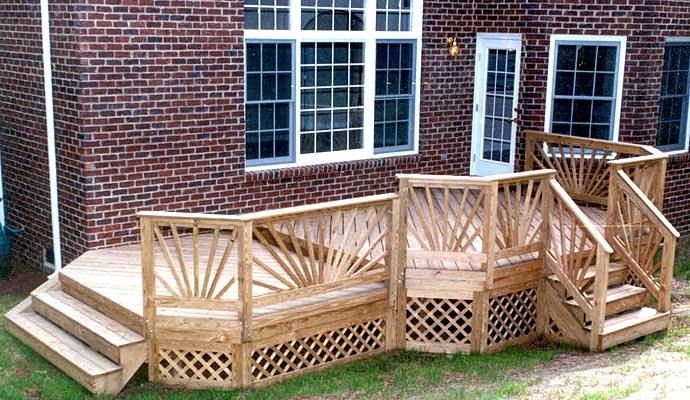
A sunburst or fan design consists of straight lines radiating from a central point, resembling the shape of the sun or a fan.
Pros:
– Highly attractive and inviting style.
– Elaborate yet simple design.
Cons:
– Challenging to clean between individual pieces.
– Cost may vary depending on the complexity and size.
Cost:
A typical sunburst or fan railing can range from $100 to $200 per piece.
7. Wrought Iron Railing:
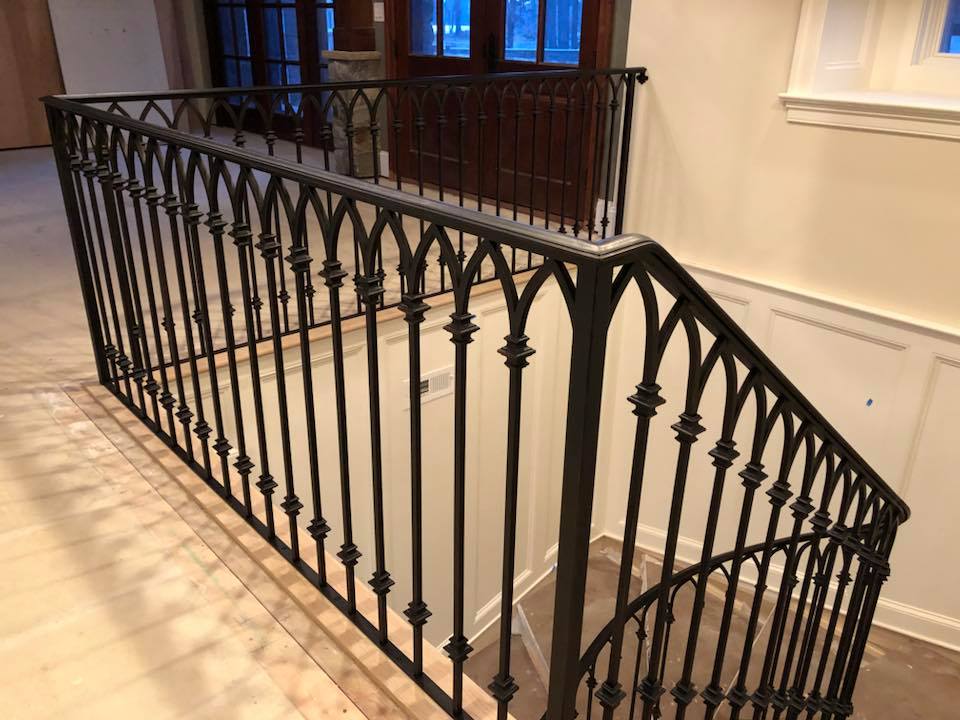
Wrought iron railings offer a timeless and classy design that adds a touch of comfort and elegance to any setting.
Pros:
– Customizable with various colors and finishes.
– Imparts a fancy and comfortable feel.
Cons:
– Requires regular sealing and coating to prevent rusting.
– Some parts may be challenging to clean.
Cost:
Wrought iron panels can cost between $200 to $400, depending on size and level of detail.
8. Cable Railing:
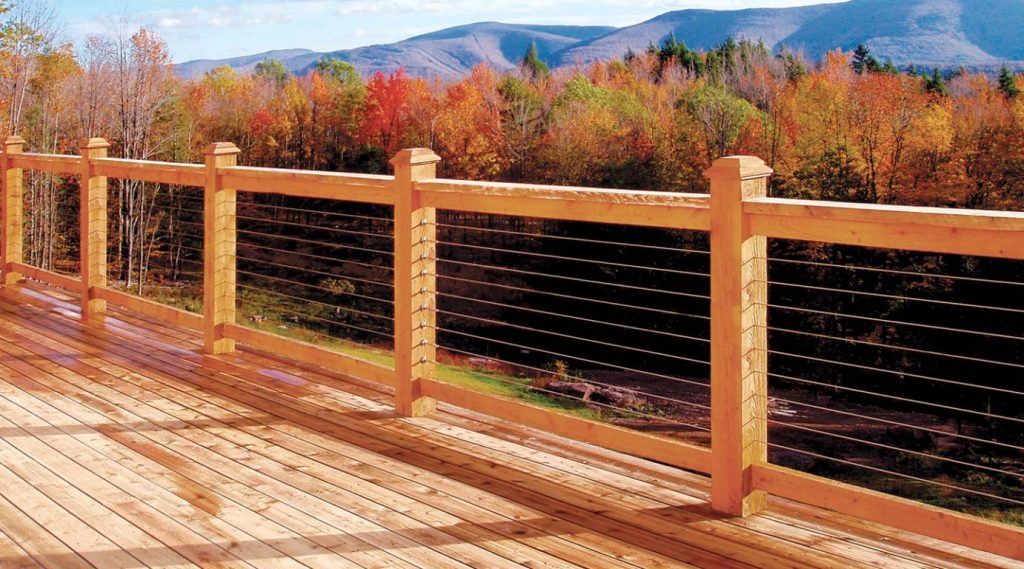
With horizontal cables and metal posts, cable railings offer a sleek and elegant option that is easy to notice.
Pros:
– Sleek and visually appealing design.
– Cables can be matched with other railing features.
Cons:
– Cables may weaken under excess pressure.
– Cost varies with the number of cables per panel.
Cost:
Cable railings typically range from $50 to $100 per panel.
9. Glass Railing:
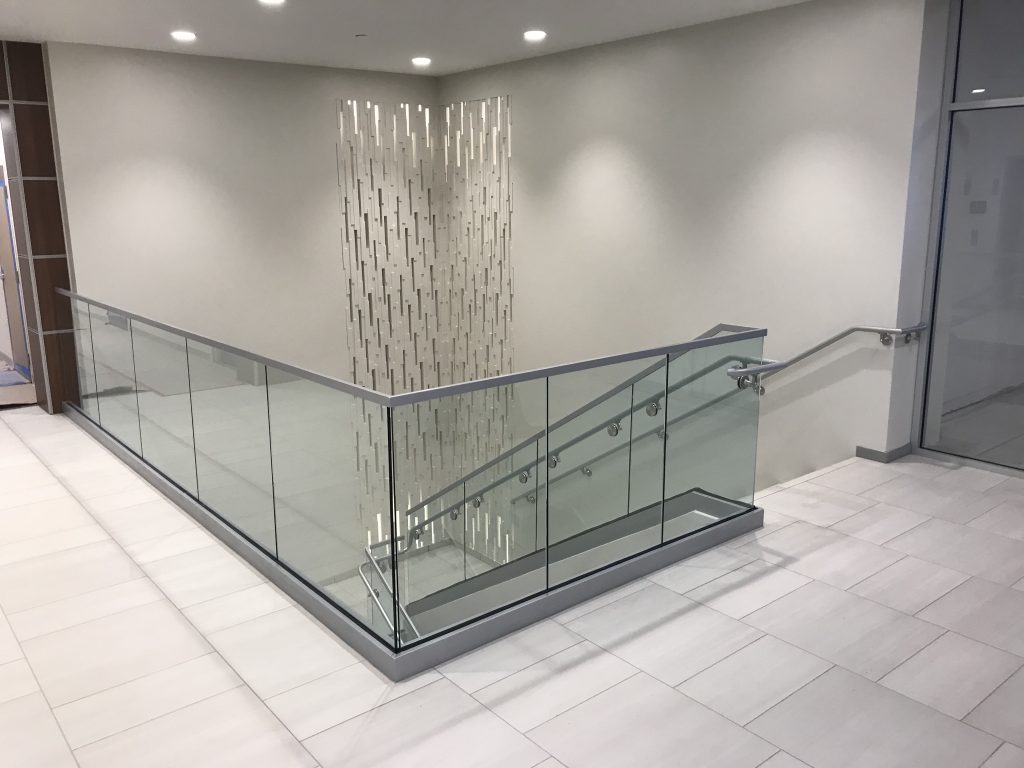
Glass railings provide a modern and customizable option, available in both clear and semi-transparent designs.
Pros:
– Adds a modern touch to your deck.
– Easily customizable with etching and transparency features.
Cons:
– Requires frequent cleaning.
– May pose collision risks for birds and other objects.
Cost:
Glass panels range from $100 to $200 per piece, depending on the customization.
10. Rope Railing:
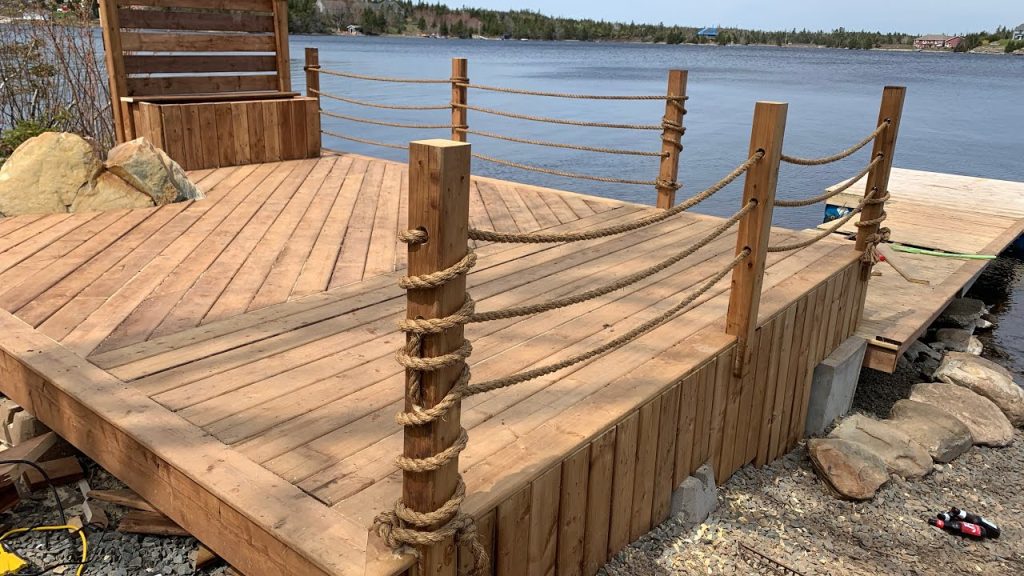
Rope railings offer a nautical look, woven carefully to establish a unique and charming style.
Pros:
– Can be paired with wood or metal bases.
– Available in various thickness levels.
Cons:
– Susceptible to extreme weather conditions.
– Requires regular upkeep.
Cost:
Rope railing panels typically cost around $100 to $150, depending on the number of rope strands used.
Common Materials for Deck Railings:
1. Wood:
A classic and traditional choice, wood provides a timeless look that can be shaped into various styles and supported by numerous stains.
Pros:
– Highly customizable with different shapes and stains.
Cons:
– Requires regular staining and maintenance to avoid water damage and rot.
2. Steel:
Steel is a popular material, often used in various forms, including nickel and copper.
Pros:
– Offers various painting options.
– Coatings protect it from water damage.
Cons:
– Prone to weakening and rusting in extreme heat.
3. Aluminum:
Lightweight and sturdy, aluminum is a popular metal choice for railings.
Pros:
– Rust-resistant and low maintenance.
– Suitable for various weather conditions.
Cons:
– Not ideal for darker color preferences.
4. Stone:
Solid and robust, stone materials can be bonded together or combined with metal posts for durability.
Pros:
– Pairs well with different metal surfaces.
– Highly durable and difficult to damage.
Cons:
– May not work well with wood materials.
– Requires sealing and treatment to prevent water damage.
Top Railing Patterns:
1. Horizontal:
Horizontal arrangements create an elongated look for your deck and offer a fence-like appearance.
Pros:
– Gives the deck a longer appearance.
– Adds a fence-like feel to the design.
Cons:
– Cleaning between closely spaced slots can be challenging.
2. Vertical:
Vertical designs feature upright posts with thicker top and bottom supports, providing a refined and carefully arranged appearance.
Pros:
– Offers a classic and elegant design.
– Works well with various materials, especially metal.
Cons:
– Requires gentle cleaning to maintain its pristine appearance.
In conclusion, when selecting a deck railing, consider not only the aesthetic appeal but also the quality of construction and safety aspects. Each type of railing offers unique benefits, so choose the one that suits your style and budget. With a well-designed deck railing, you’ll create an inviting and comfortable outdoor space for relaxation and enjoyment.
